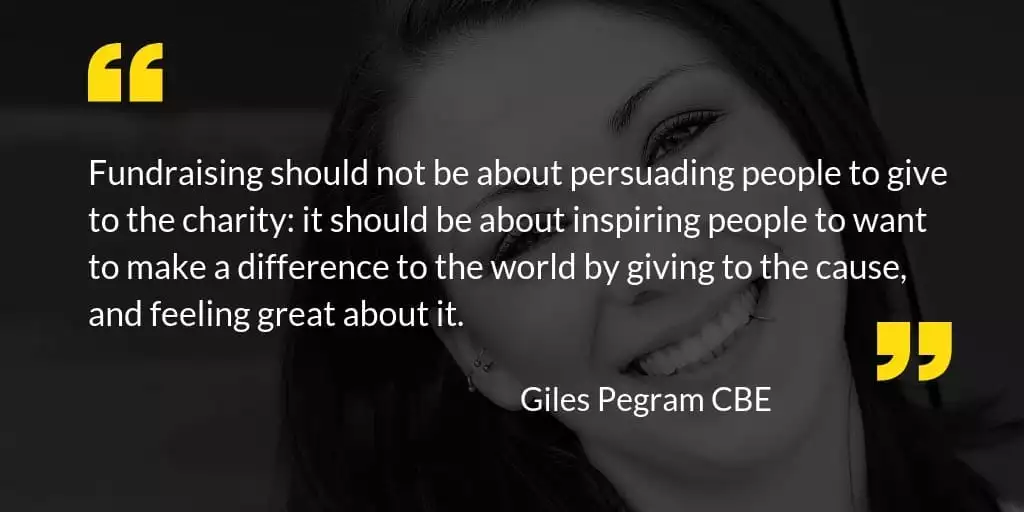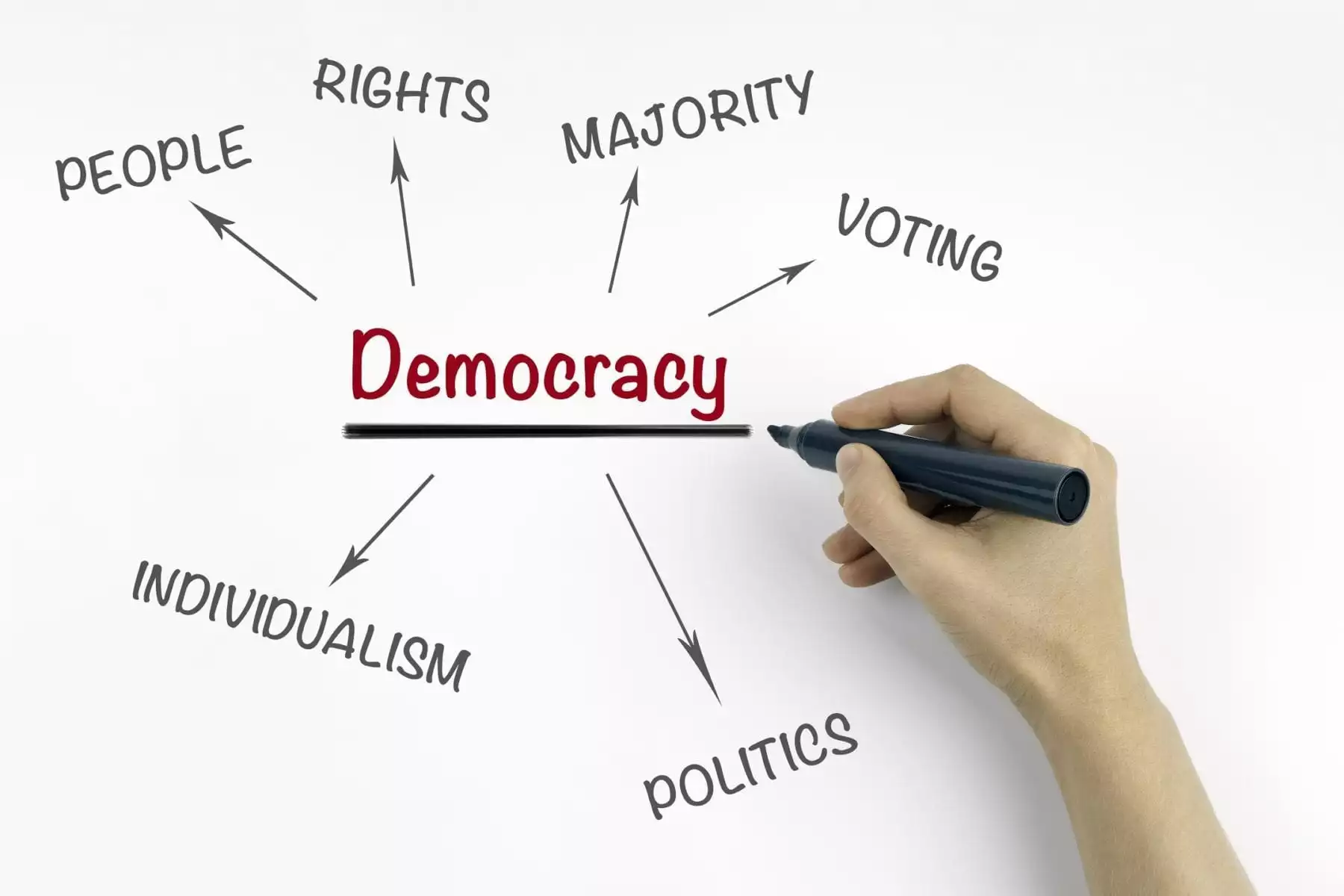Marks and Spencer is a very customer-centred company. Does it let customers design their clothes?
Donor-centred or beneficiary-centred. There has been much debate. I have argued on Facebook with my good friend Ian MacQuillin. He has given me many examples of where there has been a conflict in practice between the two. Far more than I had imagined.
There has also been debate about whether we should be more accountable to donors or to beneficiaries. Ian suggests that, at the moment, donors hold the power.
My own belief, based on considerable experience, is that there is no essential conflict between donors’ interests and beneficiaries’ interests, that beneficiaries’ interests are paramount, and that they are represented, and very powerfully. And that, in this respect, donors have no power at all, other than the power to withdraw their donations.
Advertisement
In this blog I will argue those cases.
(I have shown this blog to Ian MacQuillin, who doesn’t believe that I have misquoted him or misinterpreted him. Of course, he profoundly disagrees with many of my ideas and conclusions.)
Because of the Commission on the Donor Experience, there has been a lot of talk in the last eighteen months about putting the needs, wishes and interests of donors at the heart of our fundraising.
“You should put the needs of the donor before the financial needs of the charity. Then you will raise more money.”
“A donor who has a great experience of supporting her charity will give more, and for longer.”
“Fundraising should not be about persuading people to give to the charity: it should be about inspiring people to want to make a difference to the world by giving to the cause, and feeling great about it.”
All of this focuses on the donor. Indeed, if I recall the Commission’s reports correctly, the beneficiary is hardly, if ever, mentioned.
But don’t confuse this by thinking that ‘donor-centred’ fundraising takes precedence over a ‘beneficiary-centred’ charity.
In any charity, the beneficiary comes first. Totally, always, and without a single exception. This should be part of the culture of the charity; its DNA. It should be drummed into every fundraiser. In their induction: in all their meetings. It should be part of ‘the way things are done round here’.
Any fundraiser who thinks, feels or believes that a donor’s interests comes before the interests of beneficiaries should be corrected.
Once that is a given, then, yes, the fundraiser should put the donor first. In their thinking, their planning, their meetings, and the way they behave; day-by-day: hour-by-hour. As fundraisers.
Everything a fundraiser thinks about, talks about, and does should put the donor at the centre.
As many have said, everyone in the charity should see themselves as a fundraiser. Recognition of donors should be every-where – the behaviour of the switchboard – the donor recognition board in the entrance – photos in the conference room. The charity thrives because of donors. We should sing paeans to them each morning.
But not at the expense of beneficiaries.
At the risk of being repetitive, beneficiary-centricity should be part of a fundraiser’s soul. And then, in all their actual work, they should be thinking about the needs, motivations, and interests of the donor, day and night.
As I said above, Ian has given me many examples where, in practice, the interests of donors have been put before the interests of beneficiaries. Where donors had inappropriately influenced service provision. I could see the validity of each of his examples. And, as I have said, I was really surprised by many of them.
I considered each example seriously, and asked myself whether this was an example of an inherent conflict, or whether it was bad practice. (Or, to be fair to my fundraising colleagues, well-intentioned practice, condoned by the charity, but fundamentally wrong.)
Each and every example fell into the latter category.
So, let me give a couple of examples.

The NSPCC wanted to create a new Child Protection team in Tyneside. But those responsible for service provision had no view about whether it should be in Newcastle, Gateshead or Sunderland. The choice would have no impact on beneficiaries. A particular donor in Gateshead said that she would give considerably, but that she would only give if the Team was in Gateshead. Fine: Gateshead it is. The donor’s interests were met, but in no way at the expense of beneficiaries’ interests.
Similarly, a very major donor was funding a new building we needed in, say, Newham. He wanted to be involved. So we shared with him the architect’s drawings and allowed him to influence them. At the other extreme, he chose the carpet design and the door furniture. He liked detail. At the end of all this, having given £2½ million pounds, he felt as if he owned the building. His name was above the door. He had had a great experience which would last with him until his death.
Beneficiaries’ interests were not compromised.
Some readers might now be getting cross. This is easy. This is not what you have been talking about. OK, so let’s go to the other extreme.

A potential donor offers £1m, but wants it spent on something specific, and of interest to him. The Trustees, advised by senior management, say that this is not the right way to spend £1m, in the best interests of beneficiaries. There are, say, ten other things, within their plan, that the money would be better spent on. Of course, this judgment will have been carefully taken, by experts in their field, and there would be sound reasons for it.
So, the job of the fundraiser (probably with the support of service delivery colleagues) is to go back to the prospect, explain the reasons, and encourage him to give his £1m to one of the ten projects which would better help beneficiaries. This process might require a programme of several meetings and visits. Maybe over some time. If the prospect genuinely has the interests of the beneficiaries at heart, he will be persuaded.
If he isn’t persuaded, and insists his money goes where he wants, there is a stalemate between the prospect’s wishes, and the Trustees’ wishes, which are wholly based on their considered judgment about what is best for beneficiaries.
What then?
In this scenario, there is only one way forward. The Trustees thank the prospect for his interest, but decline his offer. Good bye.
Why do I believe that?
1) If the charity did anything else, it would be undermining the beneficiary- centred principles I talked above. If you allowed this, why would you not allow any or all of the examples where donors’ interests are put before beneficiaries’ interests?
The charity is turning down a £1mn gift which would help beneficiaries. Isn’t this mad? No. If there is going to be a beneficiary centred approach, it must apply everywhere. Even at the very top, where turning down a £1m donation that would help beneficiaries would seem abhorrent.
2) The Trustees will have approved a plan. That will have formed the basis of all interactions with all donors. If an individual donor came in and skewed that plan, the charity would betray all the other donors.
3) But, and very significantly, it will never happen. In my 30 years at NSPCC, probably dealing with more major donors, of £1mn and above, than anyone reading this blog, this stalemate never happened. Indeed we never got near it.
A prospect who genuinely had the beneficiaries’ interests at heart would accept that the senior people at the charity knew more than they did about how best to help the beneficiaries. If they persisted with their demands, then that would send a clear signal that they put their own interests above the beneficiaries’ interests, and you don’t want to have anything to do with such people. They are poison.
The next question
“By calling for direct democracy by beneficiaries, the fundraiser at IFC is talking about a different model of accountability to beneficiaries. Accountability, in a nutshell, means ensuring you do what you say you are going to do and if you do not, explaining why not to some person or group charged with representing that stakeholder group’s interests.”
Ian MacQuillin: Empowering beneficiaries will require a radical change of mindset.
This is well put.
Others have obviously discussed this in depth, and so I am an outsider.
But, what does: “…direct democracy by beneficiaries.” mean? I really don’t understand.
How can an abused child in Liverpool, or a starving family in Syria, possibly directly influence the strategy and direction of the charity that helped them. They won’t even know the name of the charity. And nor should they. And to expect them to give ‘feedback’ that will inform the charities strategy would be invasive and inappropriate.
So can we get rid of the notions of ‘direct democracy’ and ‘accountability’ when that implies individual beneficiaries? Or even, just to get it out of the way, groups of beneficiaries. The very idea of ‘focus groups’ is abhorrent, obviously.
So you are led to: “…some person or group charged with representing that stakeholder group’s interests.”
Yes. That is how you ensure that the voices of beneficiaries are heard by decision makers. That is how a charity becomes accountable to its beneficiaries. And, of course, that input, and that accountability, are essential in a charity where beneficiaries are the whole reason for the charity’s existence. Not the interests of donors. Or influential stakeholders.
“…some person or group charged with representing that stakeholder group’s interests.”
They are called the Trustees. Not a separate group that meets independently and gives input to the Trustees. The Trustees.
Read Ian’s words carefully. That must be the starting point for all the decisions made by the Trustees.
How could the recommendations made to them not be informed by the needs of the beneficiaries? Project workers listening to them, and others involved, and making judgments about the efficacy of the service provided, To take an extreme example. If a project team leader realised that the work their team was doing was not the best work that could be done for the beneficiaries, would they just keep shtum?
Or would they feed it back up the line, through normal meetings with their peers and manager? And, if common, would that not have a profound influence on the charity’s future planning and work?
At NSPCC there would have been many processes, formal and informal, to ensure that the thoughts and feelings of beneficiaries informed future plans. How else would services evolve?
To sum up
1) Donors have the power to withhold their donations. But they should have no power whatsoever on service delivery, if that is in any way in conflict with what the Trustees, advised by senior management, believe is in the best interests of beneficiaries.
There is no trade-off between donors’ needs and beneficiaries’ needs.
Fundraisers should never be asked to balance conflicting needs.
2) Beneficiaries’ views should inform decision making. Almost by definition we should be accountable to them. That is the role of the Trustees. They uniquely have the power to ensure that beneficiaries are listened to, and very carefully.
And they uniquely have the power to ensure that actual strategy and plans are informed by that.
In my 30 years attending the Trustee meetings at NSPCC we always had the skills and expertise on our Trustee Board to do just that.
(Sometimes at a very senior level, and with very heated exchanges. Seeing Dame Esther Rantzen, a Consultant Paediatrician, and the Director for Children at the Department of Health, arguing about the needs of children at risk of cruelty, was worth selling tickets for.)
If a charity does not have the skills and expertise on the Trustee Board, it should bring in some trustees that do.
I realise that mine is a very simple approach. But where’s the flaw?
Giles Pegram CBE
Consultant
19.xi.2018
With thanks to Ian MacQuillin. Ian MacQuillin is director of Rogare, the fundraising think tank at the Plymouth University Hartsook Centre for Sustainable Philanthropy.






